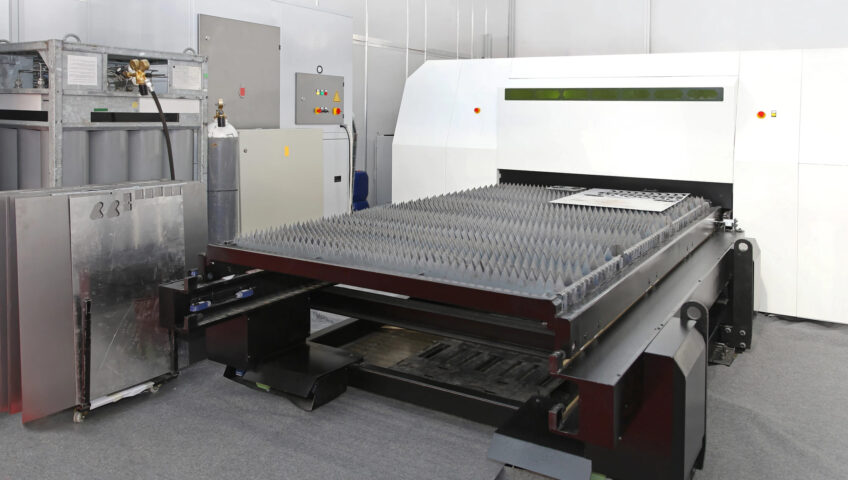Metal fabrication is used to make everything from car parts to office equipment. Galvanized steel paperclips are fabricated by design, cutting, and forming.
Metal fabrication melbourne for diverse uses is a typical process. Metalworking includes cutting, shaping, melting, bending, and assembling.
What is Industrial Metal Fabrication?
As you probably guessed, industrial metal fabrication involves assembling and integrating different parts or assemblies composed of metal, usually sheets or plates, into finished industrial goods.
Many sectors rely on industrial fabricators, including aerospace, alternative energy, water treatment, pollution engineering, material handling, and automotive, among many others. Their wares are typically massive in size and comprise things like silos, tanks, and components for heavy machinery.
In contrast to structural metal manufacturing, which will be covered later on, industrial metal parts are usually utilized in conjunction.
What is Structural Metal Fabrication?
Builders increasingly use high-strength structural metal for commercial, industrial, and residential projects. Structural metal fabrication creates I-beams for these uses.
Steel is preferred for structural manufacturing due to its strength-to-weight ratio. Almost every building project uses steel.
In a business context, the steel is the main component that helps to build the structure. The Empire State Building, Sydney Harbour Bridge, and Burj Khalifa use structural steel.
Building projects may use sheet metal folding melbourne:
• Turrets, or specialized building components that allow for more efficient manufacturing
• Platforms, which are common in many buildings and can be found in storage areas, ramps, decks, and loading bays
• Walkways (which must normally conform to several OSHA regulations to be used in industrial settings)
• Stairs, in situations where sturdiness and longevity are vital in a home, business, or factory environment
• Building components such as girders, beams, and trusses
What is Commercial Metal Fabrication?
Commercial aluminium fabrication melbourne includes producing components used in commercial establishments such as stores, restaurants, public areas, and government structures. Some examples of metal products sold in stores are:
• Guardrails
• Awnings
• Shelving
• Appliances like sinks
• Conveyors
Ornamental metal is another form of commercial Metal fabrication melbourne. Installing these metal products outside of business buildings is a common way to improve the buildings’ visual appeal and attract more customers.
Metal components used in commercial applications are often more refined and compact than those used in structural and industrial applications. But they’re equally crucial to a business’s functionality and the safety of its staff and consumers.
Technology Used for Metal Fabrication
Metalworking has existed for millennia, yet its methods and tools have changed. Metalworking has advanced in recent centuries, yet many of the essential techniques have been present for a long time. Modern aluminium fabrication melbourne technology has many applications, but a few of the most important ones include:
CAD software
CAD software is essential for metal manufacturing project design. Engineers can draw plans for fabrication companies using CAD software. This software system makes the development of 3D models and the implementation of quick design changes possible. CAD software also facilitates the translation of designs into programming languages, which is essential for programming fabrication machinery. Engineering can now swiftly determine structurally problematic areas, and computer-aided design has simplified component fine-tuning.
Automation
Automation has transformed manufacturing in recent years. More fabrication equipment is programmed to work independently and with minimum human input. This allows for round-the-clock operation, which in turn improves accuracy and repeatability. Among the many processes that automated instruments are supplied for are cutting, welding, folding, and machining procedures.
Machinery
As technology progresses, so do solutions for machines. Using lasers in cutting processes makes short work of even the thickest materials. Plasma and waterjet cutting, among others, are quickly expanding their reach. A wide range of applications and materials can benefit from these strategies.
Conclusion
Metaltex is a Melbourne-based sheet metal folding melbourne manufacturing company with over 30 years of experience. We have deep engineering and sheet metal experience and a robust supplier and partner network. Metaltex uses state-of-the-art sheet metal CNC equipment to guarantee that every sheet metal project is meticulously executed to the highest standards of quality and accuracy. Our production turnaround is lightning-fast, and our pricing is lower than the competition.
